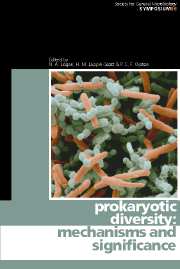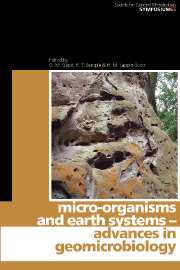5 results in Society for General Microbiology Symposia

Microbe-vector Interactions in Vector-borne Diseases
-
- Published online:
- 06 July 2010
- Print publication:
- 06 May 2004

New Challenges to Health
- The Threat of Virus Infection
-
- Published online:
- 06 July 2010
- Print publication:
- 19 April 2001

Prokaryotic Diversity
- Mechanisms and Significance
-
- Published online:
- 06 July 2010
- Print publication:
- 20 April 2006

Micro-organisms and Earth Systems
-
- Published online:
- 06 July 2010
- Print publication:
- 13 October 2005

Community Structure and Co-operation in Biofilms
-
- Published online:
- 03 June 2010
- Print publication:
- 23 October 2000

